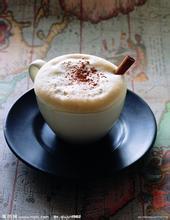Introduction of Coffee Manor producing area in Colombia

The world's second largest coffee producer after Brazil. Is the leader in the country that produces "Columbia mild". The name of origin has become a well-known name for coffee, such as Medning, Manizarez, Bogota, Almenia and so on. Coffee beans are light green and large-grained, and according to their unique thick flavor, they are very suitable for both pure coffee and mixing.
The type of coffee
Botanical classification of coffee beans
Coffee tree belongs to the evergreen tree of Rubiaceae. Since ancient times, most of the plants of Rubiaceae are plants with special effects, such as quinine tree, which is regarded as a specific drug for malaria, and Dugan, which is used to treat amoeba dysentery. Coffee is defined as the most unique alkaloid drinking flora.
Generally speaking, after two to three years of sowing, coffee trees can grow to a height of about five to ten meters, but in case coffee beans lose their aroma, taste bad, and are easy to harvest, farmers often repair them to about 1.5 to two meters. The change begins to bear fruit three to five years after sowing. The harvest period will be 20 years after the fifth year.
Coffee tree evergreen leaves, the leaf tip is more pointed, and is two opposite groups. The surface of the leaf is dark green, the back is light green, and the blooming flower is pure white. There are five stamens and one pistil in the flower, and the petals are usually five, but some have six or even eight petals. The flowers will give off a jasmine-like fragrance, but the flowers will wither in about three or four days. At first, the fruit is the same dark green as the leaf surface, but as it becomes more and more mature, it will turn yellow, then red, and finally crimson.
The fruit of coffee is formed by the outer skin, pulp, endocarp, silver skin, and the seeds wrapped in the innermost layers (coffee beans). The seeds are located in the center of the fruit, and the parts outside the seeds are of little use. Generally speaking, there are two pairs of seeds in the fruit, but occasionally there is only one seed in the fruit, which is called fruit bean. In order to show symmetry, we call the fruit with two pairs of seeds as female beans. There are at least 40 "species" of the genus Coffee, among which the more practical cultivated species are three original species: plateau cultivation, lowland cultivation, and minimum cultivation.
The circular zone at the tip of the north-south regression line, which we call Coffee Zone or Coffee Belt. Because the area is rich in rich organic matter and volcanic ash soil, the average temperature is about 20 degrees, the average annual rainfall is between 1000 and 2000mm, and there is no large temperature difference during the year, so it has become an ideal place for coffee production. Growing coffee should be strictly protected against cold, hot and dry wind and defrosting.
Taste Classification Table of Coffee beans
Sour mocha, Hawaiian sour coffee, Mexico, Guatemala, Costa Rica high real estate, Gillimanjaro, Colombia, Zimbabwe, El Salvador, Western Hemisphere washable high-grade new beans.
Bitter Java, Mantenin, Bogota, Angola, Congo, Uganda all kinds of old beans.
Sweet Colombian metenin, Venezuelan old beans, Blue Mountains, Gillemazaro, Mocha, Guatemala, Mexico, Kenya, Santos, Haiti.
Neutral Brazil, El Salvador, lowland Costa Rica, Venezuela, Honduras, Cuba.
Mellow Colombian metenin, Mocha, Blue Mountains, Guatemala, Costa Rica
Important Notice :
前街咖啡 FrontStreet Coffee has moved to new addredd:
FrontStreet Coffee Address: 315,Donghua East Road,GuangZhou
Tel:020 38364473
- Prev

What are the Arusha coffee farms in the famous coffee producing areas
Coffee producers in Java and Bali focus on growing and processing specific varieties of coffee beans and improve their craftsmanship. Greenway Coffee company David Buehrer Indonesia not only has the controversial civet, Sumatra's Mantenin coffee is mellow, Java coffee is mellow, it is a well-known classic of Indonesian coffee. Indonesia is a cheap coffee and essence.
- Next

What are the legends about Ethiopian coffee?
Ethiopia (Ethiopia) in East Africa is the origin of coffee. There is a historical story about coffee found in Ethiopia. In the mountains of the Qima region of southwestern Ethiopia, called kaffa, there is a wild shrub bearing small red fruits. A shepherd kept making noise when he found that his goats had eaten the bush fruit. So, he also curiously
Related
- Does Rose Summer choose Blue, Green or Red? Detailed explanation of Rose Summer Coffee plots and Classification in Panamanian Jade Manor
- What is the difference between the origin, producing area, processing plant, cooperative and manor of coffee beans?
- How fine does the espresso powder fit? how to grind the espresso?
- Sca coffee roasting degree color card coffee roasting degree 8 roasting color values what do you mean?
- The practice of lattes: how to make lattes at home
- Introduction to Indonesian Fine Coffee beans-- Java Coffee producing area of Indonesian Arabica Coffee
- How much will the flavor of light and medium roasted rose summer be expressed? What baking level is rose summer suitable for?
- Introduction to the characteristics of washing, sun-drying or wet-planing coffee commonly used in Mantenin, Indonesia
- Price characteristics of Arabica Coffee Bean Starbucks introduction to Manning Coffee Bean Taste producing area Variety Manor
- What is the authentic Yega flavor? What are the flavor characteristics of the really excellent Yejasuffi coffee beans?

